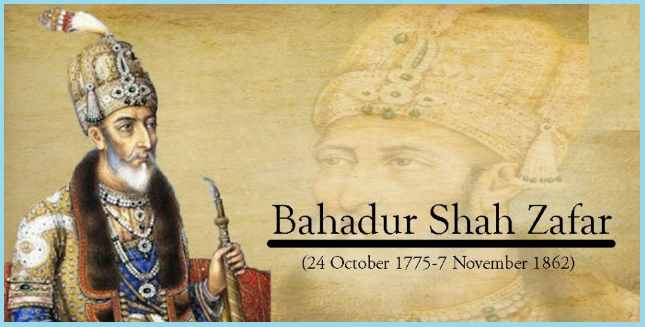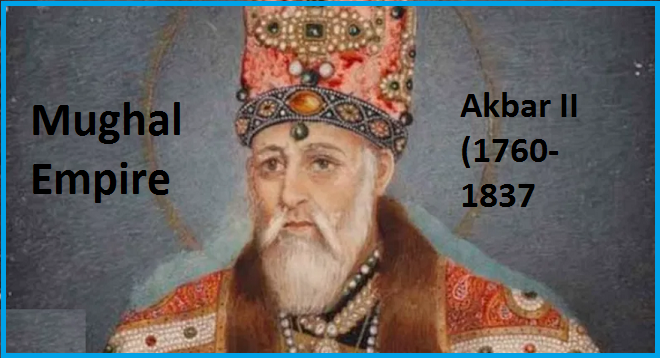Jahangir Empire
Introduction: The Fascinating Life of Emperor Jahangir
Jahangir’s life, a tale woven with splendor and complexities, epitomizes the Golden Age of the Mughal Empire. Born Nur-ud-din Muhammad Salim, Jahangir’s journey from a royal prince to an influential emperor was anything but straightforward. Known for his profound love of art, his sense of justice, and an intricate personality, Jahangir’s reign became a period of remarkable cultural and political richness. To understand his enduring legacy, it’s essential to explore the many facets of his life, from Jahangir’s early life in a royal court steeped in culture to his later years, where his influence spread far beyond the Mughal throne.
In this article, we delve into Jahangir’s family, his personal relationships, and his ambitions for the empire. We’ll examine his religious views, his commitment to art, his approach to governance, and his diplomatic alliances. Through these stories, the full complexity of Jahangir—one of history’s most remarkable rulers—comes to life.
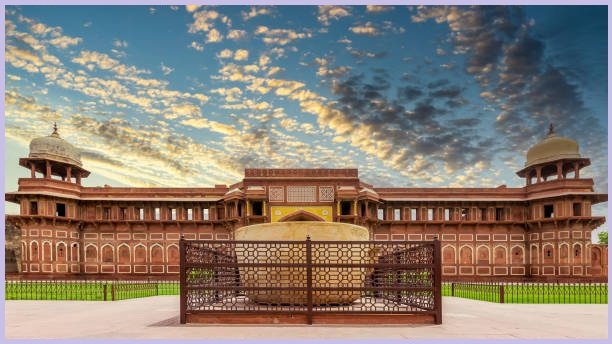
Full Name and Background
Jahangir’s full name, Nur-ud-din Muhammad Salim, reveals the blend of religious and regal influences that shaped his identity. Born in 1569 to Emperor Akbar and Mariam-uz-Zamani, Jahangir was the heir to a thriving empire. His father, Akbar, had established the Mughal Empire as a powerful and culturally diverse state, paving the way for Jahangir to inherit a legacy of power and complexity.
From a young age, Jahangir’s background was steeped in luxury and learning. Raised in the sophisticated Mughal court, he was exposed to the wisdom of scholars, artists, and philosophers, igniting his lifelong passion for the arts and sciences. But while Jahangir’s heritage provided him with privilege, his relationship with his father was marked by both admiration and tension. Akbar, known for his progressive ideals and inclusive policies, had high expectations for his son, butJahangir’s rebellious streak often put him at odds with his father’s ambitions. This mix of respect and rivalry would define much of Jahangir’s life
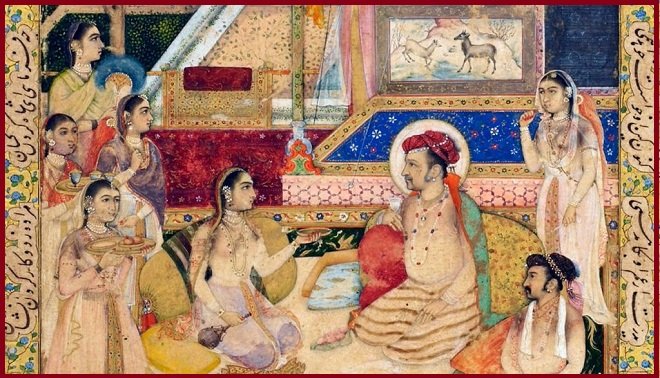
Early Life and Family
Jahangir’s early life was both rich in culture and complex in familial dynamics. Growing up, he was surrounded by wealth, art, and scholarship, with access to the finest education and the empire’s vast resources. He was close to his mother, Mariam-uz-Zamani, who was highly influential in the court, as well as his siblings. His royal family held significant power, with various factions and influences shaping Jahangir’s view of the world.
Akbar, his father, believed in religious tolerance and a balanced approach to governance, ideals that Jahangir would both embrace and modify during his reign. But Jahangir’s relationship with his father was complicated. As a young prince, Jahangir was known for his rebellious nature, even challenging Akbar on several occasions. This rebellious streak became more evident when Jahangir, impatient for the throne, briefly plotted against his father’s rules—a move that would leave a lasting impact on their relationship.
Rise to Power
When Jahangir finally ascended the throne in 1605, he inherited a flourishing empire, yet the transition wasn’t without its challenges. Jahangir had to solidify his rule and gain the trust of his subjects and court officials. Upon his coronation, he chose the regal name “Jahangir,” meaning “World Seizer,” symbolizing his ambition to expand and maintain the greatness of the Mughal Empire.
Jahangir’s rise to power saw him confront rebellions and diplomatic challenges, but his quick wit and strategic mind helped him secure his rule. To showcase his authority, he initiated several public works and reformed the legal system, demonstrating his commitment to justice and governance. He was determined to uphold and even expand upon Akbar’s legacy, blending diplomacy with a firm hand in leadership.
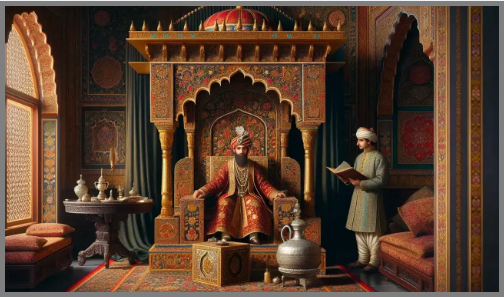
Reign and Contributions
As emperor, Jahangir brought a unique vision to the Mughal Empire. His reign is often remembered for its emphasis on justice and fairness; Jahangir himself established a “Chain of Justice,” a symbolic gesture that allowed any subject to petition the emperor directly. In addition to emphasizing the value of mercy and compassion, his administration and law enforcement measures were created to uphold order.
The empire’s cultural accomplishments, especially in the arts, increased significantly during Jahangir’s rule. He promoted the production of intricate Mughal miniatures, which came to define the era. Beyond politics, Jahangir made significant contributions to the empire through his passion for art and culture, which enhanced it and had a long-lasting effect on the Mughals’ aesthetic heritage.
Personal Life and Relationships
One of the most compelling aspects of Jahangir’s personal life was his relationship with Nur Jahan, his wife and the love of his life.
Jahangir’s choices and actions were greatly influenced by Nur Jahan, who was more than just his wife. Mutual respect and common goals characterized their relationship, which made it possible for them to work well together. Known for her intelligence and political savvy, Nur Jahan held considerable power and solidified her status as a legendary figure in Mughal history.
Together, Jahangir and Nur Jahanrepresented a power couple in the truest sense. Nur Jahan was known for her administrative skills and even led military campaigns on Jahangir’s behalf. This partnership highlighted the power balance they maintained and showed Jahangir’s progressive views on women in leadership positions. Nur Jahan’s persistent and significant influence on the empire meant that this partnership had a significant impact on Jahangir’s legacy.

Religious Views and Policies
Jahangir’s religious views were complex, shaped by his father’s principles and his own personal beliefs. Like Akbar, Jahangir embraced religious tolerance, though he differed in his approach.
Jahangir was a great admirer of Sufism and often sought spiritual wisdom and direction from Sufi saints. He was a symbol of inclusion because of his rule’s tolerance to Christianity, Hinduism, and other religions.
However, Jahangir’s religious policies were sometimes inconsistent.
He promoted peace among his subjects, but he also periodically gave orders to take action against groups that he thought posed a threat. His complicated nature and his need to strike a compromise between his spiritual preferences and the political necessities of his rule are reflected in this dualism.
Passion for Art and Culture
Perhaps Jahangir’s greatest legacylies in his contribution to Mughal art and culture. His love of art was famous, and he frequently commissioned paintings that emphasized realism, nature, and portraiture. He was also known to evaluate other people’s work. Because to Jahangir’s support of the arts, Mughal miniatures—a style that prioritized fine brushwork, vivid colors, and minute details—grew in popularity.
Jahangir’s passion for floral art and animal representations demonstrated his admiration for nature and his curiosity with it. This period is often considered the zenith of Mughal artistic achievement, with artists receiving royal patronage and support from Jahangir himself. His contributions to art were not just limited to visual culture; they set a standard for elegance and creativity that defined the Mughal aesthetic.

Political Influence and Foreign Relations
Jahangir’s political influence extended beyond the borders of the Mughal Empire.
He is considered a unique emperor in the Mughal Empire because of his contributions to justice, art, and culture. His impact on Mughal art and his commitment to diversity have endured for decades despite the challenges of his reign.
Jahangir’s impact endured long after his death because of the works he commissioned, the laws he established, and the cultural vibrancy he promoted.
Jahangir’s foreign policy was pragmatic; he welcomed trade with the West while protecting the interests of the empire. The Mughals benefited economically and intellectually from international trade and cultural interchange as a result of their strategic openness.
Death and Legacy
After his death in 1627, Jahangir left behind a rich legacy that would be praised and examined for years to come.
He is recognized as a unique monarch in the Mughal Empire for his contributions to art, culture, and justice. Because of his contributions to justice, art, and culture, he is regarded as a special king in the Mughal Empire. Despite the challenges of his reign, his impact on Mughal art and his commitment to variety have endured for decades.
Because of the works he commissioned, the laws he put into place, and the cultural vitality he fostered, Jahangir’s legacy persisted long after his passing.
Jahangir is remembered not only as an emperor but as a patron of the arts and a symbol of a flourishing era.
Emperor Jahangir had several sons, the most notable among them being Khusrau Mirza and Shah Jahan (who later became Emperor). Here’s a brief overview of his sons:
Khusrau Mirza
Birth: August 16, 1587
Death: January 26, 1622
Khusrau was Jahangir’s eldest son. He led a rebellion against his father in 1606, which strained their relationship. As a result, Khusrau was imprisoned, and his subsequent death was controversial, with some sources suggesting it was ordered by his own father.
Parviz Mirza
Birth: 1589
Death: 1626
Parviz was Jahangir’s second son. He was not as prominent as his brothers and was given limited roles in the empire. He died shortly before Jahangir’s own death.
Shah Jahan (born as Prince Khurram)
Birth: January 5, 1592
Death: January 22, 1666
Shah Jahan is the most famous of Jahangir’s sons, remembered for commissioning the Taj Mahal. He eventually succeeded Jahangir as emperor in 1628 and expanded the Mughal Empire significantly.
Shahryar Mirza
Birth: 1605
Death: January 23, 1628
Shahryar was Jahangir’s youngest son and briefly attempted to claim the throne after Jahangir’s death. However, Shah Jahan quickly defeated him, and Shahryar was executed to secure Shah Jahan’s rule.
These sons had a significant impact on Jahangir’s reign and the future of the Mughal Empire, with each one’s life influencing the dynamics within the royal family and the succession of the throne.
Emperor Jahangir had several daughters, though the records about them are not as detailed as those for his sons. Here’s what is known about some of his daughters:
Sultan-un-Nissa Begum
Birth: April 25, 1586
Death: After 1646 (exact date unknown)
Sultan-un-Nissa was Jahangir’s eldest daughter. She was known to have been close to her father and lived a relatively private life. Little is recorded about her activities or her death.
Bahar Banu Begum
Birth: 1590
Death: 1653
Bahar Banu was another daughter of Jahangir, known for her piety. Like her sister, she led a reserved life away from the political court. Her influence was limited, as she did not play a significant role in the empire’s political affairs.
Nisar Banu Begum
Birth: 1601
Death: Date unknown
Nisar Banu’s life details are sparse, with minimal records available. She, too, stayed mostly out of the political sphere.
Jahangir’s daughters were raised in the luxurious Mughal court, yet they often remained in the background compared to their brothers, with limited political or administrative influence
Emperor Jahangir, the fourth Mughal emperor, had multiple wives. The most famous among them was Nur Jahan, who wielded considerable influence in his court. Here is a list of some of his prominent wives, their birth and death years if known, and some key details:
Birth: 1573
Death: May 16, 1604
Shah Begum, also known as Man Bai, was Jahangir’s first wife. She was a Rajput princess, the daughter of Raja Bhagwant Das of Amber. She married Jahangir (then Prince Salim) in 1585 and became the mother of his eldest son, Khusrau Mirza. Shah Begum reportedly took her own life in 1604 due to the distress caused by the conflict between her son Khusrau and Jahangir.
Birth: c. 1573
Death: April 19, 1619
Jagat Gosain, also known as Jodha Bai, was another Rajput princess and the daughter of Raja Udai Singh of Marwar. She married Jahangir in 1586 and was the mother of Prince Khurram, who later became Emperor Shah Jahan. Jodha Bai was respected in the royal household but maintained a relatively private life at court.
Birth: May 31, 1577
Death: December 18, 1645
Nur Jahan, born Mehr-un-Nissa, was Jahangir’s most influential and beloved wife. She married him in 1611, and her influence in the Mughal court was immense. She effectively co-ruled with Jahangir, issuing imperial orders, handling administrative affairs, and even minting coins in her name. Nur Jahan continued to hold influence until Jahangir’s death in 1627. Afterward, she withdrew from politics and lived a relatively secluded life until her death in 1645.
Birth: Unknown
Death: c. 1599
Sahib Jamal was a lady of Persian origin and another wife of Jahangir. She was the mother of Prince Parviz Mirza. Sahib Jamal’s life remains less documented, and she died relatively young, around 1599.
Birth: Unknown
Death: After 1627 (exact date unknown)
Khas Mahal, whose name means “Special Palace,” was another wife of Jahangir. She was known for her beauty and influence over Jahangir. Though she did not hold as much political power as Nur Jahan, she was one of the favored wives. Her exact birth and death dates are not well recorded, but she remained in the royal household after Jahangir’s death.
Birth: Unknown
Death: Date unknown
Malika Shikar Begum was a lesser-known wife of Jahangir. Information about her life and death remains scarce, and she did not play a major role in courtly affairs.
Jahangir had several other wives and concubines, as was customary for Mughal emperors, but these six were among the most prominent.








